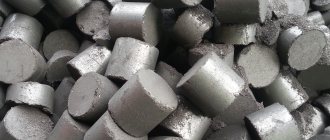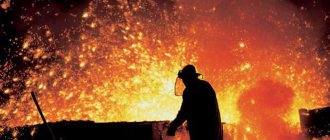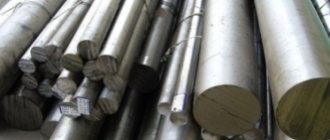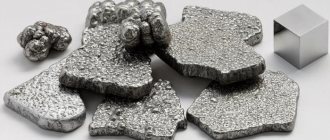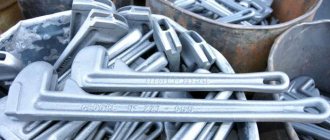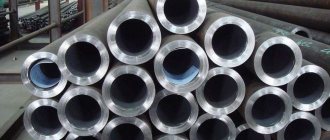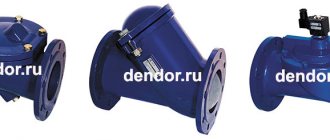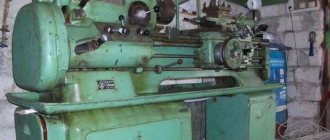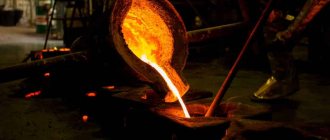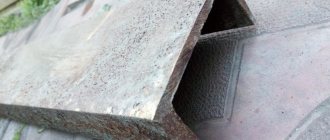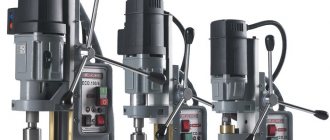Updated: 04/23/2021 12:51:21
Expert: Konstantin Borisovich Polyakov
Cast iron is one of the most famous materials for the production of castings. It is characterized by strength, good wear resistance, thermal conductivity and other attractive performance properties. But it itself is not metal. This is an alloy.
According to standards, this material is an alloy of iron and carbon. The metal part in it is at least 90%, non-metallic - up to 6.67%. In addition to carbon itself, the alloy may include other impurities - manganese, phosphorus, silicon, and so on. Not only the brand, but also the physical and chemical properties depend on the percentage of these inclusions.
Thus, the most widely used are white and gray cast iron. They just differ in the percentage of carbon content in the composition. And because of this, performance properties also vary.
In this article we will figure out what the difference is between gray and white cast iron - and what is better to use for certain purposes.
What is gray cast iron?
The suitable type of cast iron is one of the most popular in the engineering industry. This metal is distinguished by the presence of plate-shaped graphite in the thin section.
Its content in gray cast iron varies.
The higher it is, the darker the metal becomes at the fracture, and even the softer the cast iron. Castings from the type of metal in question are available in any thickness.
Main features of gray cast iron:
- small relative elongation - generally not exceeding 0.5%;
- low impact viscosity;
- low elasticity.
Gray cast iron contains a small percentage of fixed carbon - no more than 0.5%. The remaining carbon is in the form of graphite - in other words, in a free state. Gray cast iron can be produced on a pearlitic, ferritic, or mixed ferrite-pearlite base.
The metal in question mainly contains a significant percentage of silicon.
Gray cast iron can be finished very easily using cutting tools.
This metal is used for casting products that are ideal from the point of view of compression resistance. For example, various support elements, batteries, water pipes.
The use of gray cast iron is also popular in the automotive industry - very often in the process of manufacturing parts that are not subject to shock loads. For example, housings for machine tools.
What is white cast iron?
This type of cast iron is distinguished by the presence of carbon, which is virtually completely represented in the metal structure in a bound state. The metal in question is hard and at the same time very fragile.
It is resistant to corrosion processes, wear, and temperature influences.
White cast iron is very difficult to finish using hand tools. When fractured, this metal has a light tint and a radiant structure.
The main area of use of white cast iron is further processing.
Basically, it is converted into steel, in most cases - into gray cast iron. In industry, its use is not very popular due to the reasons for its fragility and difficulty in processing.
The percentage of silicon in white cast iron is much less than in gray cast iron. The metal in question will also have a much higher concentration of manganese and phosphorus (remember that in most cases their presence is determined by the chemical composition of the ore from which the cast iron is smelted).
Actually, an increase in the amount of silicon in a metal is accompanied by a decrease in the volume of bound carbon in its structure.
Comparison
The main difference between gray cast iron and white is that the first contains a small percentage of fixed carbon, while the other, on the contrary, contains mostly fixed carbon. This characteristic determines the difference between the metals in question in nuance:
- hardness;
- colors on the break;
- wear resistance;
- fragility;
- machinability with hand tools;
- areas of use;
- percentage of fixed and free carbon;
- percentage of silicon, manganese, phosphorus.
A small table will help us to more closely analyze what the difference between gray and white cast iron is in the listed qualities.
Application area
This alloy is used in the following industries: mechanical engineering, machine tool building, shipbuilding. Some elements of household products are produced from it. In mechanical engineering, it is used to make parts for trucks and cars, tractors, combines and other agricultural machinery. The use of alloying additives makes it possible to obtain specially specified properties. For example, they are used in the manufacture of slabs with different surface shapes.
White iron casting
Bleached cast iron has a fairly limited scope. It is used to produce parts of simple configurations. For example: balls for mills, wheels for various purposes, parts for rolling mills.
It is widely used in the production of parts for such large units as hydraulic and molding machines, and other industrial mechanisms in this area. A specific feature of their work is that they are constantly exposed to abrasive material.
Source
Comparing gray and white cast iron | Main differences
Cast iron is one of the most well-known materials for the manufacture of castings. It is characterized by durability, good wear resistance, thermal conductivity and other attractive performance properties.
But it itself is not metal. This is an alloy.
According to the rules, this material is an alloy of iron and carbon. The iron part in it is at least 90%, non-metallic - up to 6.67%.
Not counting carbon specifically, the alloy may also include other impurities - manganese, phosphorus, silicon, and so on.
Not only the brand, but also the physicochemical properties will depend on the percentage of these inclusions. Thus, white and gray cast iron are most commonly used.
They just differ in the percentage of carbon content in the composition.
And thanks to this, the operating properties also differ. In this publication we will figure out what is the difference between gray and white cast iron - and what is better to use for certain purposes.
Graphitization, features of malleable cast iron, the concept of ferritic and pearlitic cast iron
In metallurgy, malleable cast iron is produced by graphitization of white hypoeutectic cast iron containing graphite in an amount of 2%-4.3%. During graphitization, annealing occurs in which cementite (iron carbide) decomposes, all or part of the carbon is converted into graphite (annealing carbon). Carbon in cast iron is an important element that determines its mechanical properties; the higher the grade of cast iron, the lower the graphite content. Thanks to the technological process that introduces transformations into the composition of the alloy, cast iron acquires plasticity; its properties are between gray cast iron and steel. Unlike steel, the alloy has fluidity, damping capacity (vibration absorption), and higher wear resistance.
Physical properties of malleable cast iron.
CC is produced in continuous chamber and tunnel furnaces.
The undeniable advantages of CC are:
- uniformity;
- no stress;
- high mechanical and anti-corrosion properties;
- excellent stability in humid air, flue gases, water;
- plastic;
- strength;
- KCh is amenable to welding, caulking, pressing, cold and hot straightening, and cutting.
The high strength of CP is explained by the insignificant influence of the flake structure on the mechanical characteristics of the metal core. Products made from such an alloy are characterized by toughness and ductility, good resistance to impact loads, but the products are not forged, they are cast. The disadvantages of the material are the complex technology and the length of the production process.
According to the production method, CPs are classified into ferritic class F (black-core) and pearlite class P (white-core). Ferritic CN is produced by two-stage graphitizing annealing of white cast iron. Pearlite grades are obtained by annealing in oxidizing environments. As a result, a change in the structure of cast iron and decarbonization occurs. This is one of the strongest types of cast iron. In the alloy, the main high-strength mass with a metallic structure is complemented by the excellent shape of the graphite structure and its distribution.
"Grey" cast iron
Gray cast iron contains up to 3.5% carbon in its composition.
Moreover, this non-metal is presented in its own graphite form (in other words, in the form of hexagonal plate-like two-dimensional crystals). Moreover, GOST 1412 takes into account the inclusion of substances such as:
Silicon (up to 2.5%). Improves casting properties, increases softness, but is in proportions that are insufficient to reduce resistance to deformation;
Manganese (up to 0.8%). Increases strength, creates persistent internal stresses, which increase resistance to external mechanical influences;
Phosphorus (up to 0.3%).
A harmful impurity, which, however, cannot be completely eliminated during manufacturing. However, the con is minimal.
In general, the material composition provides very good durability and wear resistance.
This is actually why it is most widely used in the heavy automotive industry for the manufacture of parts that are not subject to shock influences. It is also used for the production of structural elements of machine tools.
An interesting specificity of “gray” is its fluidity during casting. Thanks to this, another area of its use is the production of aesthetic products.
Various cast iron fences with complex geometry and texture, stained glass parts and decorative items - all this is made from this alloy. Also, it is malleable for cutting.
On the other hand, its mechanical reliability is quite average. Under shock loads and similar impacts, the part may burst or split.
It is rarely used for casting “critical” practical components and structural elements, which is also due to its low strength. But the “gray material” is resistant to compression and can withstand even heavy loads.
As a consequence, it is used in the production of columns, wastewater, water and heating pipes, machine beds and engine pistons.
Good qualities
Reliability in compression, allowing parts to be used under load; Mechanical resistance and wear resistance;
Minuses
Poor strength, due to which the structure practically cannot withstand shock loads; In everyday life, gray cast iron is practically not used, and in production it is more often used for further modification into malleable, wear-resistant and ductile options.
After alloying with other impurities, it can also be used for the production of tableware.
Application of malleable cast iron in agriculture, automobile and shipbuilding
Mechanical properties of malleable cast iron according to GOST 1215-79.
CP is used in mechanical engineering, the main consumers being the areas of tractor construction and agricultural machinery. Ferritic cast iron has high viscosity and strength; it is used for the production of components that are not subject to abrasion, for example, flanges, levers, forks. Various parts are made from pearlitic cast iron: diesel engine pistons, rocker arms, clutch assemblies, crankshafts, camshafts with cams, which, interacting with the pushers, operate the unit in a certain cycle, chain links, pawls, ridges, knife heads, brake drums and etc.
These products operate under the influence of static and dynamic loads and abrasion. The advantages of pearlitic cast iron are strength, wear resistance, high fatigue strength, resistance to high temperatures, and elimination of vibration.
CC is used in the automotive industry in the manufacture of thin-walled domestic castings operating under the influence of dynamic alternating loads.
Drives, gearboxes, wheel hubs, gears, gear housings, differentials, steering systems, engine and spring brackets, brake pads, rollers, linings, plugs, balancers, wings, cardan shafts, manifolds, etc. are made from the alloy. KCh is widely used in shipbuilding in the production of equipment for ships. It is used to make portholes, mast brackets, rowlocks, bridges, and models of steam and water fittings.
In the carriage industry they are used in the manufacture of spare parts for air brakes, bearings, brackets, traction couplings, shock-traction devices, brackets; These parts work under loads of impacts, bending, and wear.
"White" cast iron
White cast iron is an iron-carbon alloy in which all carbon will be in a bound state (in the form of cementite Fe3C).
The content of this non-metal is up to 3.8%.
And this significantly changes the performance characteristics of the material. By the way, there are virtually no other impurities.
Your ads will be inserted here by
Easy Plugin for AdSense
.
Please go to the plugin admin page to Paste your ad code OR Suppress this ad slot.
White cast iron is hard and yet very fragile.
Destruction or deformation of a product made from it can occur due to both mechanical and thermal external factors. Moreover, this alloy has almost no qualities important for the manufacture of final products.
Thus, it is not ductile, does not lend itself well to casting, and is resistant to cutting and forging. Due to this, it is not possible to make objects of complex geometry or small sizes from it.
Production of gray cast iron grades SCh20, 21, 25, 30 GOST 1412-85
And “white material” itself, as a rule, is not used in production.
It serves as the basis for other alloys - including high strength and malleable. Also, it is increasingly being converted into steel - compounds of iron with carbon in small quantities (up to 0.6%) and other regular or alloying impurities.
Good qualities
Purity of the material (small content of foreign impurities); Reliability, not subject to cutting and other deforming influences;
Minuses
Very low working quality, almost impossible to finish; Low fluidity, making it difficult to cast;
Fragile, easily cracks and collapses even with minor impacts.
All such disadvantages make white cast iron unsuitable for use either in the automotive industry or in other areas. Thanks to this, it is actually not used anywhere.
But on its basis, with alloying with foreign impurities or, on the contrary, by purification, other convenient and widely used alloys are obtained.
Which is better – gray or white cast iron?
So, “gray” is fluid, durable and resistant to mechanics, but is easily damaged by cutting and does not always withstand impact loads.
White, for its part, on the contrary, is almost not damaged by cutting, but it is very fragile, not plastic, not fluid and, as a rule, is not used in its pure form. But the difference between the materials does not end there.
Carbon content and form
Getting cast iron
Up to 3.8% in the form of cementite (Fe3C compound) Silicon (up to 2.5%), manganese (up to 0.8%)
Mechanical reliability (ability to withstand single shock loads)
High (however, not enough for the manufacture of “critical” structural components) Fragility (how high is the risk of splitting upon impact or temperature change)
Hardness (ability to withstand cutting loads) The highest among all cast iron alloys
Flowability (ability to take curved shapes during casting)
Low (caused by brittleness) Elasticity (ability to change during forging or constant mechanical loads)
Wear resistance (ability to maintain shape and performance under constant, intermittent or continuous shock loads)
In general, white cast iron is generally not used in the production of end products. It is the raw material for other alloys, including steel.
But gray is used very widely. However, in the domestic sphere it is easier to “meet” alloyed or self-prepared cast iron - for example, high strength, anti-friction or malleable cast iron.
Application area
Ordinary white cast iron is used very limitedly, since it is poorly applicable to mechanical and heat treatment. For the production of products it is often used in the form of unprocessed or partially processed castings.
The alloy is most widely used in the manufacture of large parts of simple configuration. These are housings and parts of machine tools and rolling mills, balls for mills, drive and support wheels. In addition, white cast iron is used for the manufacture of assembly units that are constantly exposed to abrasive materials.
An important point is the use of ordinary cast iron as a raw material for the manufacture of malleable grades of iron-carbon cast iron and steel alloys.
Cast iron
Cast iron began to be used many years ago. This material has special performance characteristics that stand out from those characteristic of steel.
The production of cast iron, despite the emergence of a decent number of different alloys, has been established in many countries. In order to establish the properties of cast iron, it is necessary to consider the characteristics of its chemical composition, on which certain physical qualities depend.
Metallurgy of cast iron and steel.mp4
The composition of cast iron is considered a good argument, which in most cases determines the mechanical properties of purchased castings.
Among other things, many properties are influenced by the mechanisms of secondary and primary crystallization.
SKODA KODIAQ: cast iron or aluminum?
The carbon content in cast iron can vary from 2.14 to 6.67 percent. New production technologies make it possible to very accurately control the concentration of all elements in the composition, due to which the fragility criterion is reduced and other characteristics in operation become greater.
Looking at the composition of cast iron, it must be said that, in addition to iron and carbon, it necessarily includes the following elements:
- Silicon (concentration no more than 4.3%). This component has a good effect on cast iron, making it very soft and improving its casting properties. However, too high a concentration can make the material more sensitive to flexible deformation.
- Manganese (no more than 2%). By adding such an element to the composition, the reliability of the material increases significantly. However, too high a concentration will cause fragility of the structure.
- Sulfur is a harmful impurity that can significantly impair the performance of the material. Basically, the sulfur concentration in cast iron will not exceed 0.07%. Sulfur turns out to be the basis for the formation of cracks when the composition is heated.
- Phosphorus is contained in the composition in a concentration of less than 1.2%. An increase in the concentration of phosphorus in the composition turns out to be the basis for the formation of cracks when the composition cools. Among other things, this component turns out to be the basis for the deterioration of other mechanical qualities.
As in most other compositions, the most basic element in the chemistry of cast iron is carbon. The type of material depends on its concentration and type.
The structure of cast iron can vary significantly depending on the production technology used.
Physical properties
Cast iron has become widespread due to its attractive physical properties:
- The price of the material is significantly lower than the price of other alloys. That is why it is used to create all kinds of products.
- Looking at the density of cast iron, let us recall that this figure is significantly less than that of steel, making the material much lighter.
- The melting point of cast iron can vary slightly depending on its structure, in many cases it is 1,200 degrees Celsius. Due to the inclusion of various additives in the composition, the melting point of cast iron can significantly increase or decrease.
- When selecting a material, many pay attention to the fact that the color of cast iron may vary slightly depending on the structure and chemical composition.
The boiling point of cast iron also in most cases depends on the chemical composition. In order to consider the physical characteristics of a material, it is necessary to pay attention to each of its varieties.
A different structure and composition become the basis for imparting other physical and mechanical qualities.
Common metal markings
In accordance with the recommendations of GOST 1215–79, the marking of malleable cast iron includes the first letters of its name - KCH. The written number, consisting of two digits, displays the indicator of tensile strength or the limit of resistance to deformation and fracture, measured in 10 MPa - CN 70. The number written with a hyphen reflects the amount of plastic deformation during stretching with the unit of measurement “%” (relative elongation ) – KCH70-2.
In addition to this, grades of ductile alloys are classified based on their structures. The ferritic and ferrite-pearlite class includes CNs with relatively low fracture resistance limits and higher percentages of relative elongation. Alloys with a pearlite structure are presented with high tensile strength values and relatively low elongation values.
According to GOST 26358, it is possible to determine the following properties of ductile cast iron grades:
- temporary tensile strength;
- Brinell hardness (HB);
- relative extension.
Production technology
Cast iron is smelted over many years, which is due to its unique working qualities. The huge number of different types of alloys determines the use of special marking rules.
The marking of cast iron goes like this:
- Foundries are designated by the letter L.
- Gray has become widespread, and a combination of the letters “SCH” is used to define it.
- Malleable is designated KCH.
- Maximum or white is designated by the letter P.
- Anti-friction or gray indicate ASF.
- Alloy cast irons have very different chemical compositions and are designated by the letter “C”.
The production technology of cast iron takes into account several stages, which make it possible to obtain the required structure. Looking at the process of producing cast iron, we note the following points:
- Production takes place in specialized blast furnaces.
- Alloy and refractory cast iron can be used as a raw material for metal ore.
- The technology is presented in the reduction of iron oxides ore. As a result of the restructuring of the crystal lattice and the change in structure, the output is a material called cast iron.
- Looking at production methods, let us recall that technological features also lie in the materials used - cokes. Charcoal refers to network gas or thermal anthracite, which acts as fuel.
- Cast iron production involves the tempering of iron in solid form using a specialized furnace. At this stage, liquid cast iron comes out.
Equipment for making cast iron can vary significantly. Among other things, the production technology used in most cases determines what kind of material will be obtained.
An example is the production of ductile iron, which involves giving the structure a non-standard shape.
Types of cast iron
There are quite a huge number of different types of material in question. The classification of cast iron in most cases depends on the structure and chemical composition.
There are the following cast iron options:
- Grey. This type of material is characterized by low ductility and high viscosity, as well as good machinability. The composition contains carbon in the form of graphite. Area of use: automotive industry; production of wear parts. As practice says, the concentration of phosphorus can vary over a fairly wide range: from 0.3 to 1.2%. Due to its special chemical composition, the material has high fluidity and is widely used in artistic casting. Anti-friction cast iron comes at a relatively affordable price, which also determines its wide distribution.
- White. Due to the fact that in this composition carbon is presented as cementite, the structure is characterized by incredible fragility and very high hardness, as well as low casting characteristics and poor machinability. It is necessary to take into account that white cast iron is used for conversion into steel or for the manufacture of malleable iron. It is increasingly called the limit.
- Half is characterized by very high wear resistance, which is associated with the distribution of carbon into a cementite and free base. This type of material is often used in the automotive and machine tool industries.
- Alloy. In order to give special qualities to cast iron, it is also alloyed. Alloy cast iron has a very high resistance to wear and corrosion due to the inclusion of nickel and chromium, as well as copper. These types of cast iron get their own name depending on how the alloying component was used during their manufacture.
- High strength cast iron is produced by introducing various elements, such as magnesium and calcium, into the composition of liquid gray cast iron. As a result of alloying, the shape of graphite changes - it resembles a sphere and does not change the crystal lattice. It is necessary to take into account that, in its own characteristics, this metal resembles carbon steel; it is used, for the most part, in the process of manufacturing various wear-resistant parts.
- Malleable. It is obtained by melting white cast iron, which must be heated to a high temperature and kept in a similar state. In most cases, alloying elements are added to give the composition special qualities. The key characteristics are high viscosity and a very high degree of ductility. It has become widespread in mechanical engineering.
- Specialized. It is an alloy that contains a decent amount of manganese and silicon. Very often used to remove oxygen from steel during its manufacture or remelting, thereby lowering the melting point.
Each type of cast iron has its own special structure and chemical composition, which determine its area of use.
Tool carbon steels
Designation and marking of tool carbon steels
Tool carbon steels are marked in accordance with GOST 1435-90.
Tool carbon steels are produced in the following grades: U7.U8GA.U8G, U9, U 10, U 11, U 12 and U 13. The numbers indicate the carbon content in tenths of a percent. The letter G after the number means that the steel has a high manganese content. The grade of high quality tool carbon steel has the letter A.
Examples of designation and decoding
- U12 - tool steel, high-carbon, containing 1.2% carbon, high-quality.
- U8GA - tool steel, high-carbon, containing 0.8% carbon, 1% manganese, high quality
- U9A - tool steel, high-carbon, containing 0.9% carbon, high quality.
Designation and marking of alloy steels
Alloy steels are marked with a combination of numbers and capital letters of the alphabet. The designation does not contain the word “steel” or the symbol “St”. For example, 40Х, 38ХМ10А, 20Х13. The first two digits indicate the carbon content in hundredths of a percent. The following letters are abbreviations for the element. The numbers after the letters indicate the content of this element in whole percentages. If there is no number behind the letter, then the content of this element is up to 1%.
Table 4. — Designation of elements brand
| Yu-Al Aluminum | C-Si Silicon | A-N Nitrogen |
| R-V Bor | G - Mn Manganese | D-Cu Copper |
| F-V Vanadium | M-Mo Molybdenum | E-Se Selenium |
| B-tungsten | N-Ni Nickel | C-Zr Zirconium |
| F-Fe Iron | T-Ti Titan | B-Nb Niobium |
| K-Co Cobalt | Ta - Tantalum | X-chrome |
For the manufacture of measuring instruments, X, HVG are used. Steels for dies: 9Х, Х12М, 3Х2Н8Ф.
Steels for impact tools: 4ХС, 5ХВ2С.
Designation of high-speed high-alloy steels
All high speed steels are high alloy. These are steels for equipping the working part of cutters, cutters, drills, etc.
The marking of high-speed steels always begins with the letter P and a number indicating the tungsten content as a percentage. The most common brands are P9, P18, P12.
- Corrosion-resistant steels.
Corrosion-resistant (or stainless steel) is steel that has high chemical resistance in aggressive environments. Corrosion-resistant steels are obtained by alloying low- and medium-carbon steels with chromium, nickel, titanium, aluminum, and manganese. Anti-corrosion properties are imparted to steels by introducing a large amount of chromium or chromium and nickel into them. The most widely used are chromium and chromium-nickel steels. For example, chromium steels 95Х18, 30Х13, 08Х17Т. Chromium-nickel stainless steels have greater corrosion resistance than chromium steels, have increased strength and good processability with regard to pressure treatment. For example, 12Х18Н10Т, 08Х10Н20Т2. - Heat- and
resistant to chemical destruction in gas environments, operating in a lightly loaded state - Heat-resistant steels
are steels that can withstand mechanical loads without significant deformation at high temperatures. Heat-resistant steels include steels containing chromium, silicon, molybdenum, nickel, etc. - For example, 40Х10С2М, 11Х11Н2В2МФ.
- Wear-resistant steels
with increased wear resistance: ball bearing, graphitized and high-manganese. Features of the designation of bearing steels. The marking begins with the letter Ш, the number after the letter X indicates the chromium content in tenths of a percent. For example, ШХ9, ШХ15ГС.
Usage
Due to its special physical and mechanical properties, the use of cast iron has become possible in various fields:
- For the production of various parts in the field of mechanical engineering. For a long time, this particular alloy has been used in the manufacturing of many different parts for internal combustion engines. At the same time, machine manufacturers change the main parameters of the material by alloying it, which is necessary to achieve unique qualities. Among other things, brake pads made from this alloy have become extremely popular.
- Cast iron products can withstand the effects of low temperatures. Thanks to this, the material is used during the manufacture of equipment and tools that are used in harsh climate conditions.
- Cast iron is valued in the metallurgical field. This is due to the low price, which in most cases depends on the carbon concentration and the properties of the resulting structure. High casting qualities also make the material much more beautiful. The resulting products are highly durable and resistant to wear.
- Over the last half century, the alloy in question has been actively used in the manufacturing of plumbing equipment. This is due to high anti-corrosion abilities, as well as the possibility of obtaining products of very different shapes. Examples include cast iron bathtubs and heating appliances, various pipes, radiators and sinks. Despite the emergence of materials that could replace cast iron, such products are quite popular. This is due to the fact that they preserve their original appearance over a long period of operation.
- The alloy is also used for the production of various decorative elements, which is associated with high casting qualities. Examples include fencing bars, various figures, and much more.
Among other things, the scope of use depends on the following parameters of the material in question:
- Some grades have great strength, which is specific to steel. This is actually why the material is used even after the emergence of modern alloys.
- Products made of cast iron are able to retain heat for a long period. In this case, thermal energy can be equally distributed throughout the material. These qualities began to be used in the manufacturing process of heating radiators or other such products.
- In most cases, it is believed that cast iron is an environmentally safe material. This is actually why it is often used in the process of making various dishes, for example, cauldrons.
- High resistance to acid-base conditions.
- Excellent hygiene as all contaminants can be easily removed from the surface.
- The material under consideration has a fairly long service life provided that the operating instructions are followed.
- The chemicals contained in it cannot cause harm to health.
To summarize, we recall that the long-discovered production technology of the material in question remained virtually unchanged for a long time. This is due to the fact that at relatively low costs it was possible to obtain a significant volume of molten alloy.
At the moment, material is often manufactured from scrap, which makes it possible to further reduce the selling price of the resulting product to a high degree.
Features of receiving
When producing white cast iron, it is important to exclude the graphitization process during crystallization of the melt, which is done:
The degree of wear resistance of castings is largely determined by the nature and composition of carbides. Alloying the metal with nickel, manganese and chromium gives a martensitic carbide structure. When their total concentration is equal to the carbon content, the hardest structure is formed.
Most often, chromium is used as the main alloying additive. It gives the alloy high corrosion resistance, which is maintained even in aggressive environments. After normalization, these blanks are resistant to acids at temperatures up to 1000 degrees. Additional alloying with nickel (0.1%), titanium (0.5%) and copper (0.5-2.0%) gives the parts the ability to maintain their geometric shape and original dimensions under prolonged heating conditions.
Products made of high-chromium white cast iron, called sormite, are capable of operating at temperatures of 800-900 degrees. It contains:
The blanks are first fired to relieve internal stress. During the annealing process, the temperature slowly rises to 850 degrees, followed by gradual cooling. The resulting parts are characterized by:
Mechanical properties
Due to the fact that white cast iron contains carbon in the form of carbides, it exhibits good strength characteristics:
Alloys with reduced carbon content are more resistant to intense thermal effects. This feature is used to reduce the number of cracks in the metal. When alloyed with nickel, chromium, and vanadium, a heat-resistant alloy is formed that has high wear resistance.
The compositional features determine the negative properties of white cast iron:
The material is very difficult to weld even when heated - microcracks form at the seam, which increase even more when cooled.
Explanation of markings
The alloy is marked with an alphanumeric code, which indicates its main properties and alloying additives:
Decoding the grade of white cast iron ChN20D2KhSh gives the following information - this is a high-alloy heat-resistant material, along with iron and carbon containing:
Grades X28, X34 are stainless cast iron with high electrical resistivity.
Application area
The high strength characteristics of the alloy and the ability to maintain a given shape under thermal influence have found application:
High hardness combined with brittleness makes machining difficult by cutting or milling methods and requires the use of tools made of special steel grades. Therefore, the use of white cast iron as a structural material is limited. Special conversion types with low silicon content are used for steel smelting and foundry production.
Half-and-half or bleached varieties contain carbon in the form of carbides and in a free state. They have high wear resistance and are used for the manufacture of friction mechanisms subject to dry friction:
Some products require high surface hardness of the cementite structure. It is created artificially by rapidly cooling the workpiece to a depth of 5 mm. This operation is called bleaching. It is required:
Preparation of malleable cast iron
White cast iron serves as a raw material for the production of other types of metallurgical products. It is used for the production of malleable cast iron using heat treatment, during which the process of graphitization and decarbonization of the workpieces occurs. The ratio of the starting elements in the raw materials is:
It contains the structure of ledeburite, which is a mechanical mixture of cementite and perlite. Workpieces on special pallets are slowly passed through chambers with a given temperature regime. The speed of movement is calculated in such a way that the metal is exposed to heat for a certain time.
Annealing takes place in several stages with different temperature conditions:
The annealing time can be reduced by pre-hardening the castings and subsequently using a higher temperature regime. But at the same time, stresses and cracks form in the metal structure. Therefore, the method is used to a limited extent - only for small parts of simple shape.
Source
